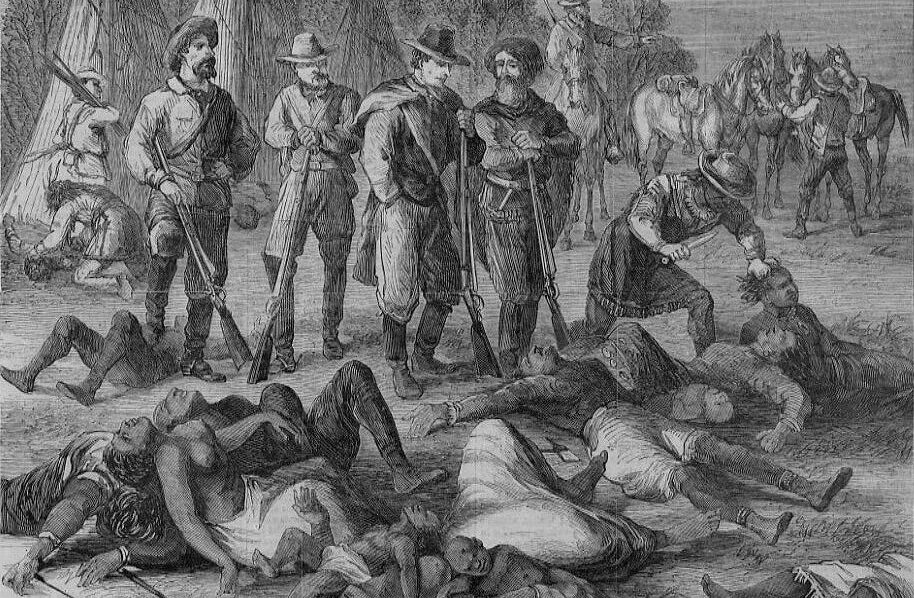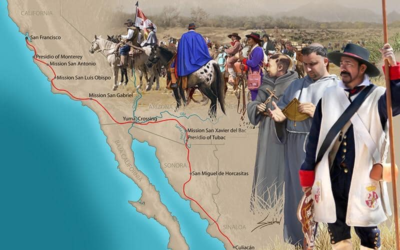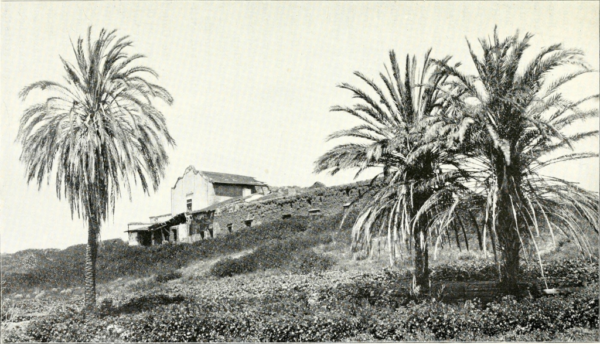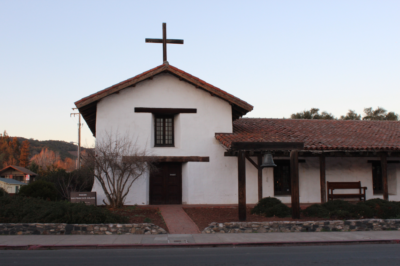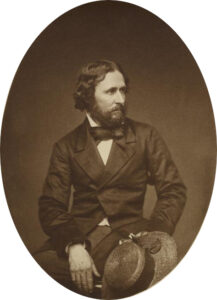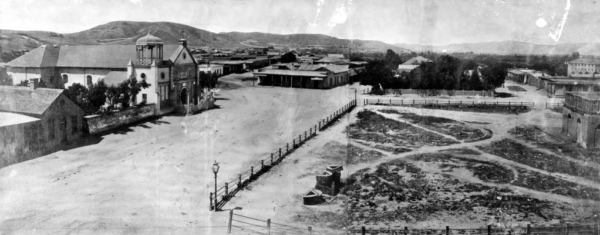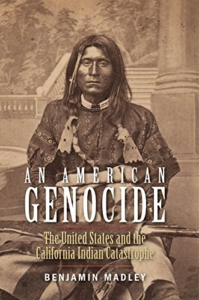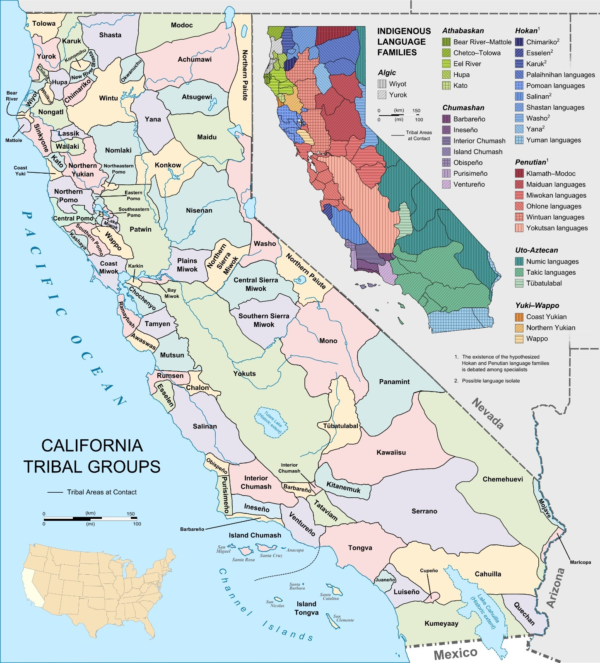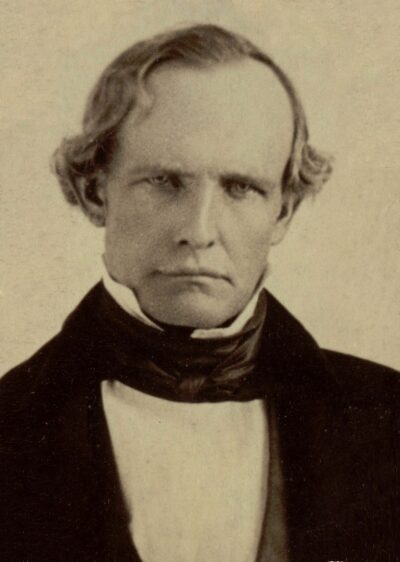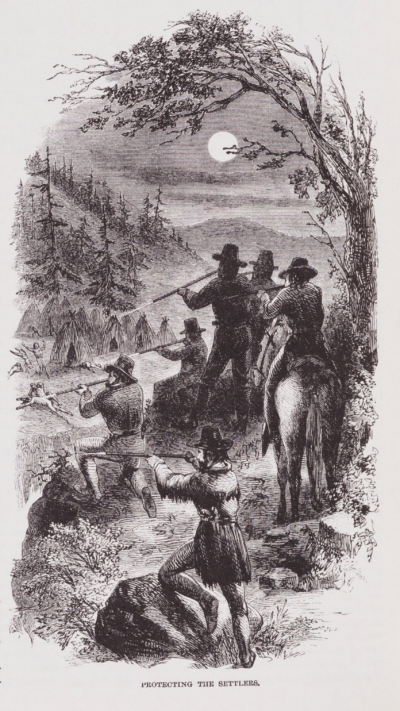Source:Unión Hispano Americana
The manifest destiny of a country (the United States) that arrogated to itself the right to exterminate the native Californians immersed in the Hispanic culture, whom it did not even consider human beings.
Since I was a child I was taught, based on the popular Spanish proverb, that “Una cosa es predicar, y otra dar trigo” (easier said than done) which means that there is a big difference between talking about doing something and actually doing it, which is therefore quite different. That was complemented with another proverb that states “Cree el ladrón que todos son de su condición” (that’s like the pot calling the kettle black) which suggests that sometimes we project our own characteristics and moral deficiencies on others.
This brings to mind the mythical figure of the great American hero John Wayne. At the head of the countless films that built a large part of my childhood worldview of the, at that time, idolised America and its heroic conquest of the Wild West to its final goal: “California”.
Nothing is more false and has been more shamelessly mythologised and in this brief text I try to bring this thesis to light so that Hispanics in both hemispheres and anyone who can read Spanish, or at least bothers to translate it, will know “la puta verdad”, said in the cultured neo-Latin language, or “the fucking true” as it would be said in gringo-speaking language, a crude cultural legacy of the once called “barbarians of the North”.
In these brief lines I am going to dispel some of the most recurrent and surreal myths and fallacious deceptions, and not for that reason, less believed, both in Spain and across the seas, that is, on both sides of the pond, as we vulgarly say in Spanish.
First falsehood: There was no Wild West
The famous “Far West” was called New Spain, which was not wild at all! it was already well civilised by Spain, all the toponyms, even the stones on the road had Spanish names. And California was part of the viceroyalty of the aforementioned name, which was made up of Nevada, Arizona, New Mexico, Utah, Colorado, Montana, and even Oregon became part of it. We got rid of it in order to avoid another war (one of many…) with the rascals of the euphemistically called “sons of Great Britain”, better known as The English, who were always after our great exploits, more jealous than an ugly bride… Trying to snatch away the great achievements of Spanish exploration and conquest, doing deserved justice to their reputation as pirates and parasites, incapable of achieving anything on their own, if not by stealing the achievement, from the possessor of the true merit which was normally Spain. And the fact is that “donde no hay no se puede sacar” (you can’t get blood from a turnip) referring again to the wise Castilian proverb.
Second Falsehood: The gringos never conquered the West
That conquest was the work of Spain and by Spaniards, using very little violence and a lot of diplomacy, stemming from the enormous experience acquired after centuries of exploration and conquest with serious lack of means and resources for such a task. Only the Americans massacred the native peoples, exterminating already Hispanicised peoples in language, religion and culture.
Third Falsehood: The Indians they fund were not savages under a Paleolithic evolutionary phase
They were hunter-gatherers and there were between 100 and 300 original peoples (depending on the variation of the different sources) with hundreds of different languages, and culturally unified under one lingua franca that made it possible for them to understand each other: Spanish. The Franciscan missionaries introduced them to craftsmanship, intensive agriculture and livestock farming, which led to their revitalisation and demographic development, plus a notable advance in their standard of living and human development in the civilising environment that the missions brought about.
Fourth falsehood: Western-Cow Boy culture.
Culture, it obviously was, but not Anglo-Saxon, not by any stretch of the imagination. The cowboys’ clothing was typical of the Spanish Andalusian cowboy, notably the wide-brimmed hats. Their horses, the famous Mustangs, were so called because of the Anglo-Saxonisation of the word mesteño. A word derived from the old Spanish livestock institution the Mesta, and a name given to any horse or cattle without a known owner, and which as a consequence of this vicissitude automatically became part of this institution. The form of equine riding and dressage known as “western”, in Spanish “del oeste”, was nothing more than the type of dressage, riding and handling of horses in Spain, coming from the “Jineta” riding inherited from the way of riding of the Arabs, and in the rest of Europe it was unparalleled. As well as the saddle, the reins, the spurs, the stirrups, everything… everything! Even the very profession of cowboy. No Cow, no Boy, no bullshit….
Bitter truths
The Spanish colonisation of California began in 1769, when a group of expeditionaries led by the Franciscan friar Junípero Serra established the mission of San Diego de Alcalá, the first of a chain of religious missions that spread across the region over the next 50 years.
During the Spanish colonisation of California, there were conflictive and sometimes violent cases with some native tribes in the region, but there was “never” a policy of extermination, but rather of cultural assimilation and non-coercive evangelisation.
Spanish policy towards the native tribes of California focused on conversion to Christianity and incorporation into Spanish culture and society. The Franciscans who administered the missions saw themselves as the “saviours” of the native tribes and believed that they were elevating the natives to a higher, more civilised way of life. The natives were not forced to abandon their traditional languages and cultures, but were taught Spanish and Spanish customs.
The mission became a centre of agricultural production, and the natives were instructed in crafts and work on the mission lands and cattle ranches. In short, Spanish policy in California focused on the cultural assimilation of the native tribes into Spanish society and culture. This policy had a significantly positive impact on the way of life of the native tribes and their integrative relationship with the Hispanic colonisers.
Spanish policy in California did not specifically include the imposition of the Spanish language or the forced evangelisation of native tribes.
Instead, the Franciscan missionaries who administered the religious missions in California sought the voluntary conversion of the native tribes to Christianity through persuasion and teaching. The missionaries learned the indigenous languages and taught the Spanish language to the natives to facilitate communication and religious instruction, as was the official policy of the Spanish Crown throughout its dominions in both hemispheres.
For example, the 1680 Law of the Indies established that Indians were equal before the law and had the same rights as Spaniards, including the right to own property and receive an education. In addition, the Spanish Crown promoted the protection of native cultures and the preservation of their languages and traditions. However, it is important to note that the implementation of these laws and policies may not always have been uniform.
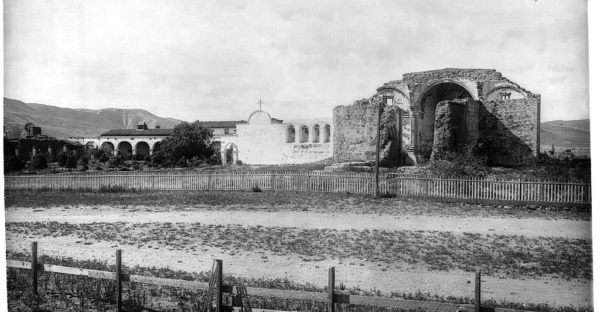
After Mexican independence, the mission churches in Alta California were expropriated by the state in 1833 and converted entirely into ranches.
The Beginning of the holocaust
California’s indigenous population experienced a significant decline after the arrival of US-Americans following the violent expansion of the United States in the 19th century. The reduction of the native population was the result of a combination of factors, including state-sponsored violence, slave exploitation, the spread of disease, the loss of arbitrarily expropriated lands, and the plundering of traditional resources.
The specific role of John C. Fremont and Leland Stanford in the process of the occupation and colonisation of California is indisputable. John C. Fremont was an US-American explorer and military man who was involved in the conquest of California during the Mexican-American War of 1846-1848. Leland Stanford was a business magnate and politician who helped build the transcontinental railway, which facilitated the settlement of California and westward expansion.
John C Fremont and Leland Stanford, were among those primarily responsible for the expansion and ultimate US occupation of California, which from 1848 onwards, lost 80% of its indigenous population who were simply killed as state policy under the criminal doctrine of manifest destiny.
The expansion and occupation of California by the United States had devastating consequences for the native communities of the region, with episodes of violence and oppression against these communities. The official policy of the US government in the second half of the 19th century was one of forced “US-Americanisation”, which involved the elimination of indigenous cultures and languages and the imposition of Anglo-Saxon culture and language.
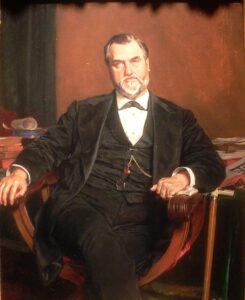
Leland Stanford. Today there is a university names his honour and he has streets, squares and statues all over California.
There are several historical and political factors that contributed to the disappearance of California’s native peoples. Some of these are:
- Territorial expansion: Americans sought to expand their territory and control trade routes in the region. To do so, they invaded the territories of native peoples, which led to conflict and warfare that resulted in the death and forced migration of thousands of natives.
- Colonisation and exploitation: As US-Americans settled in California, they began to exploit the region’s natural resources, including forests, agricultural lands and rivers. This had a devastating impact on native communities, who depended on these resources for survival.
- Forced US-Americanisation: As I mentioned earlier, the official US government policy in the second half of the 19th century of forced “US-Americanisation” involved the elimination of indigenous cultures and languages and the imposition of Anglo-Saxon culture and language. This had a devastating impact on the identity and well-being of native communities.
In short, the disappearance of the native peoples of California was the result of a series of historical and political factors involving an infamous crime against humanity that does not seem to weigh on the remorse and conscience of the country that claims to be blessed by God with the famous slogan “God Bless America”.
A State Crime
In the second half of the 19th century, Washington state officials and federal authorities in California “cowardly” incited, promoted, aided and financed miners, settlers, ranchers and popular militias to enslave, kidnap, murder and exterminate a significant proportion of Native Americans, including normally defenceless men, women, children and the elderly.
Under U.S. rule, between 1846 and 1873, the Indian population of California fell from an estimated 150,000 to 30,000. These figures are considered conservative and Benjamin Madley, the first historian to unveil to the US-American and international public “something that was already known less accurately”, has dared to divulge the full extent of the execrable slaughter, with the involvement of state and federal officials.
Taxpayer dollars supported the violence by motivating indigenous resistance. This thoroughly researched book is a comprehensive and chilling history of the US-American genocide. Madley describes pre-contact California and the precursors to genocide, before explaining how the gold rush provoked violence against California Indians. He recounts the emergence of a state-sanctioned killing machine and the widespread social, judicial and political support for genocide. Many were involved: vigilantes, volunteer state militiamen, US Army soldiers, Congressmen, California Governors and others. State and federal governments spent at least $1,700,000 on campaigns against California Indians. In addition to assessing the culpability of government officials, Madley considers why the massacre constituted genocide.
The arrival of US-American settlers and the gold rush was a holocaust that had a destructive impact on the people and culture of California’s native tribes. Many tribes were displaced from their lands and forced to work in the gold mines, while others were victims of violence and oppression. As a result, many native tribes and cultures in California were pushed to the brink of extinction and others became totally extinct.
It was during the Gold Rush of the 1840s and 1850s that violence and discrimination towards California’s native tribes intensified, and some settlers and miners adopted a policy of extermination and genocide. These individuals and groups attacked and killed native tribes, and bounties were offered for the heads and scalps of murdered natives.
The Anglo colonisation of California involved the suppression of native tribal cultures and ways of life, and the imposition of political, economic and social systems that disadvantaged these communities.
Peter Burnett, popularly known for his racist attitude towards blacks, Chinese and Native Americans, was the first Governor of California and a strong advocate of the extermination of California’s native American tribes. He influenced a policy continued by successive administrations for several decades, in which the State offered bounties of $25 to $50 for each Native killed.
The US federal government implemented oppressive policies towards California’s native tribes. One of these was the federal government’s policy of “forced assimilation”, implemented through the boarding school system, which sought to separate Native children from their families and cultures in order to force their assimilation.
There were policies and programs that encouraged violence and killing of Native tribes, such as the state Bounty Law. The oppressive policies and programs that were implemented against California’s native tribes and other ethnicities led to the loss of land and natural resources. In addition, oppression and discrimination against native tribes continued in the decades and centuries that followed, which has a lasting impact on these communities.
Here is a description of the most relevant repressive measures:
- Bounties for “hostile Indians”: As I mentioned earlier, in 1851, California Governor Peter Burnett signed a law establishing a $25 bounty for each “hostile” Indian killed. This law encouraged violence and killing of Native Americans.
- Military campaigns: During the Gold Rush era, the California government launched several military campaigns against Native American tribes. These campaigns often involved violence and the death of many Native Americans.
- The removal of tribes from their lands: Settlers invaded and occupied the traditional lands of California’s native tribes, resulting in the loss of land and natural resources for these communities. This often led to violent conflicts between settlers and Native Americans.
- The imposition of Anglo-Saxon culture: The government and churches often attempted to impose their culture on Native Americans, resulting in the loss of cultural identity and autonomy for these communities. Boarding schools for Native American children, for example, were intended to force children to adopt American culture.
Some of the California Native tribes that suffered the most during colonisation and the gold rush include the Yuki, Wappo, Pomo, Yokut, Miwok, Chumash, Ohlone, and many others. These tribes were displaced from their traditional lands and suffered a significant decline in population due to violence, lack of access to natural resources, and the loss of their traditional lands.
There were numerous massacres and acts of violence against Native Californians by settlers and US military forces. Some of the most notable include:
- Wiyot Massacre: In 1860, a band of white settlers killed more than 80 Wiyot men, women and children at Humboldt Bay.
- Clear Lake Massacre: In 1850, a militia of white settlers killed more than 100 Pomo at Clear Lake.
- Bloody Island Massacre: In 1850, US military forces killed about 100 Pomo on Bloody Island in Clear Lake.
- Yontoket Massacre: In 1853, white settlers killed more than 300 Yontoket Indians in the Pit River region.
- Konkow Valley Massacre: In 1863, white settlers killed over 100 Konkow Indians in the Konkow Valley.
- Owens Valley Massacre: In 1862, white settlers and U.S. Army scouts killed more than 200 Paiute in the Owens Valley in what is known as the “Paiute War”.
- Eel River Massacre: In 1860, white settlers killed more than 200 Wiyot on the Eel River.
- Yana Massacre: In 1864, white settlers killed more than 100 Yana in the Chico Mountain canyon.
- Hoopa Valley Massacre: In 1860, white settlers killed more than 80 Indians in the Hoopa Valley.
- Achulet Massacre: In 1864, U.S. military forces killed more than 150 Tolowa in the Achulet region.
These are just a few of the documented massacres that occurred during the expansion of white settlers in California and the subjugation of native communities in the region. It is important to keep in mind that violence against California natives was widespread and systematic, and that many massacres and acts of violence were never recorded or documented in the historical record.
In the end, we can draw the conclusion that the myth of the deified US-American hero as the great conqueror of wild and untamed lands, driven by Hollywood’s infectious self-promotional propaganda, is so false that it could more fairly be redefined as the “cowardly, bloodthirsty, plunder-thirsty, unscrupulous US-American murderer”, as well as the “greedy, bloodthirsty Spanish conquistador”, ruthless sexual predator and compulsive rapist of women, is another widely documented falsehood that has not been done justice, and will not be done justice, until the media echo and disseminate his great feats of exploration and conquest, together with the expansion of Hispanic humanism based on the intellectualism of the scholastic school of Salamanca and the creation of a more just, cultured and prosperous society wherever he went, in which he built dozens of universities, thousands of schools, hospitals and cities, many of which are considered world heritage sites. This exponentially increased the well-being and happiness of the thousands of people he liberated from tyrannical empires such as the Inca and anthropophagous civilisations such as the Aztecs or the Caribs. Imposing the Pax Hispanica for 300 years.
All this ruined in the last 200 years, after the hoax of liberating independence, which has subjected the Hispanic world to a standard of living and prosperity, barely capable of rivalling that of sub-Saharan Africa.
All for the benefit and usufruct of the barbarians of the North…
Alberto Marigil is the owner and manager of the blog Unión Hispano Americana and replies in doantions to continue his research and documentary work. Any financial help to him will be welcome. For any donation, you can do it by Bizum to the phone +34632764765. For any other means contact him directly via WhastApp.
Share this article
On This Day
- 1552 Battle of Bicocca.
- 1565 Miguel López de Legazpi founds Cebu as Villa de San Miguel.
- 1806 María Cristina de Borbón Dos Sicilias was born.
History of Spain
26 August 2020
27 January 2021
Communism: Now and Then
23 December 2022
28 July 2021
